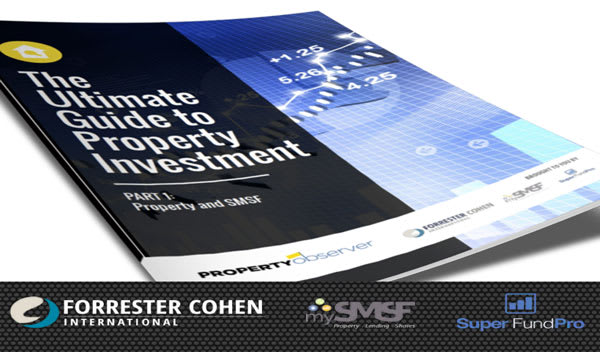How to plan your SMSF exit strategy: Forrester Cohen
People who invest in real estate through a self-managed superannuation fund should have an exit strategy in mind for their property from the time they acquire it, even if they plan to hold the investment for the long term and pass it down through the family. This exit may be based on performance criteria as you would do with any other asset, or may be based on income requirements. It also needs to include the considerations for a number of unexpected circumstances.
There are many scenarios in which an SMSF’s trustees may wish to sell a property. They may identify a better investment opportunity elsewhere and want to realise a capital gain on the property. They have identified their funds have a better opportunity to out perform the market in another property investment.
The fund may need to pay out pension benefits to retired members and find its income is insufficient to cover the payments. Or, one or more of the members may die, requiring the fund to make a lump sum inheritance payment.
Whatever the reason for a sale, the fund should have plans in place for disposing of the investment.
For real estate, this starts with the capital growth drivers that increase the performance of the property and filters down through to the property selection.
The location, type and features of the property should appeal to other buyers, as well as to tenants.
The demographics, economy and employment prospects in the local area will affect buyer demand. Homes in large cities and towns typically sell more quickly than those in regional areas as there is a larger pool of buyers.
In general, residences that are close to transport and amenities such as shops and schools will be easier to both rent and sell than those in less convenient locations. A well-maintained home with parking, practical living spaces and a tidy kitchen and bathroom may be easier to sell than an awkwardly laid out property that needs work.
There are many dimensions to buying well for income and capital gain. People purchasing property through an SMSF, like other property investors, should do their research and consider what will appeal to other buyers as well as to tenants.
Timing
The timing of a property sale will be driven by a range of personal and market factors.
Assuming the SMSF’s trustees have control over the timing – rather than being forced to sell due to a member’s unexpected death for instance. While the most tax effective option is usually to continue to hold the property in the fund until the members have retired, there may be performance criteria that drive the timing of an exit.
After the members have retired and converted the SMSF into a pension, all fund income, including capital gains, is tax free. Before the members’ retirement, capital and income on investments in the fund are taxed at 15%.
Property owned through an SMSF, like property held directly outside of superannuation, qualifies for a capital gains tax discount if the asset has been held for more than 12 months. The CGT discount for property owned inside an SMSF is one third of the gain. That means the fund pays 15% tax on two thirds of the capital gain if it is sold before its members retire.
Say an SMSF sells a property making a capital gain of $120,000 before its members have retired. The fund will incur a tax bill of $12,000 if it has held the property for more than 12 months. That tax bill could be avoided by timing the sale to settle after the members’ retirement. However changes in a property market’ stength need to be considered. In a bear market changes can easily wipe $12,000 from a sale price
Multiple generations
Strategies that involve for holding property through an SMSF across multiple generations of a family are more complicated.
Planning for what will happen when a fund member dies needs to take a variety of factors into account. These include whether the property will be sold after a member’s death; whether there is debt on the property; whether it is positively or negatively geared; how the fund is structured; how fund member are related to one another; and whether they are dependants of the deceased, as defined under superannuation law.
Some SMSF trustees decide to sell the property if one of the members dies. That way any debt can be repaid out of the sale proceeds and the deceased fund member’s share of the remaining equity can be paid to their beneficiaries or estate.
If the trustees would prefer to keep the property after the death of a fund member, the plan should consider how the beneficiaries will be paid their inheritance. It should also consider how the fund will make loan repayments and meet other costs associated with the property without that member’s contributions to the fund.
Superannuation regulations restrict how property can be transferred when used as a vehicle for holding properties over multiple generations. There are tax consequences for each course of action.
Trustees should seek specialist legal and tax advice on the best options for their fund.
